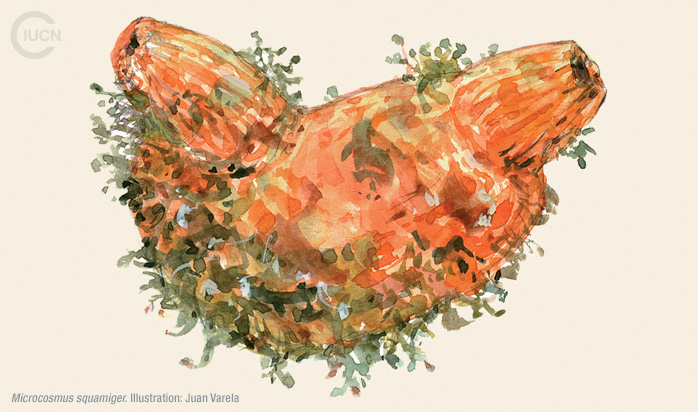Microcosmus squamiger
Information
Microcosmus squamiger occurs in the Mediterranean Sea in shallow littoral rocky habitats, particularly inside marinas, harbours and aquaculture facilities, where it forms dense aggregations that can reach more than 2,000 individuals per square metre. It can also spread locally and colonize nearby natural rocky habitats.
Microcosmus squamiger is a simultaneous hermaphrodite, capable of producing and releasing both sperm and eggs almost at the same time. It reproduces in summer and fertilized eggs develop normally at 20–25 °C in a relatively short period of time. Old ascidians seem to die afterwards, to be replaced by new individuals the following winter.
Microcosmus squamiger can be confused with the very similar and also alien species Microcosmus exasperatus. The species differ in some internal characters, such as the shape of the siphonal spines, which in M. squamiger are fingernail shaped and short, while in M. exasperatus they are pointed and longer.


Microcosmus squamiger is native to south-east Australia and has now spread to temperate waters worldwide. It was first recorded as introduced in the Mediterranean Sea in the 1960s (as M. exasperatus), and it is now very common around the western Mediterranean in Morocco, Tunisia, Spain (including Ceuta and the Balearic Islands), France (including Corsica), the Tyrrhenian Sea (coast of Italy) and Malta. Given its presence in harbours, marinas and aquaculture farms, it is thought to have been introduced in the ballast waters of shipping vessels, in fouling on ships and recreational boats, and through aquaculture.
Microcosmus squamiger can form dense aggregations (from about 500 up to about 2,300 individuals per square metre) in the shallow sublittoral zone, closely carpeting rocky areas and becoming a major structure-forming organism that colonizes all the available substrate and alters local native communities. It can be found on natural and artificial hard substrates, in or close to harbours and marinas.
Microcosmus squamiger is considered a pest to bivalve culture in some areas, where it competes for food and space. It is also a nuisance fouler on ships, recreational vessels and other submerged manmade structures.
Rius M. et al., 2009. Population dynamics and life cycle of the introduced ascidian Microcosmus squamiger in the Mediterranean Sea. Biol. Invasions 11, 2181–2194.
Rius, M. et al., 2012. Tracking invasion histories in the sea: facing complex scenarios using multilocus data. PLoS ONE 7, e35815.






